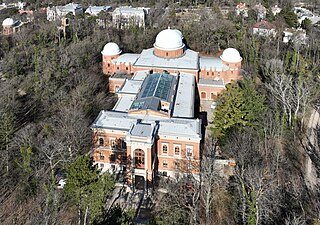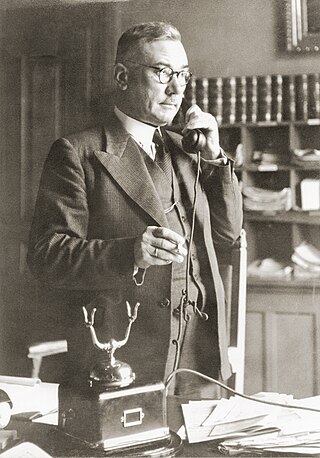Related Research Articles

Political identity came to the territory now occupied by the Principality of Liechtenstein in 814, with the formation of the subcountry of Lower Rhætia. Liechtenstein's borders have remained unchanged since 1434, when the Rhine established the border between the Holy Roman Empire and the Swiss cantons.

Krems an der Donau is a town with 25,271 inhabitants end 2022 in Austria, in the federal state of Lower Austria. It is the fifth-largest city of Lower Austria and is approximately 70 kilometres west of Vienna. Krems is a city with its own statute, and therefore it is both a municipality and a district.

The Vienna Observatory is an astronomical observatory in Vienna, Austria. It is part of the University of Vienna. The first observatory was built in 1753–1754 on the roof of one of the university buildings.

The House of Liechtenstein, from which the principality takes its name, is the family which reigns by hereditary right over the principality of Liechtenstein. Only dynastic members of the family are eligible to inherit the throne. The dynasty's membership, rights and responsibilities are defined by a law of the family, which is enforced by the reigning prince and may be altered by vote among the family's dynasts, but which may not be altered by the Government or Parliament of Liechtenstein.

The Austrian Trade Union Federation or Austrian Federation of Trade Unions is a labour union of employees. It is constituted as an association and is subdivided into seven smaller affiliated trade unions. Each union is traditionally dominated by a certain political faction, with the strongest faction in the ÖGB as a whole traditionally being the social democratic one, which is known for its close contacts to Austria's Social Democratic Party (SPÖ); chairmen of the ÖGB have often also been influential SPÖ members.

Stockerau is a town in the district of Korneuburg in Lower Austria, Austria. Stockerau has 16,974 inhabitants, which makes it the largest town in the Weinviertel. Stockerau is also called "Lenaustadt" because the Austrian poet Nikolaus Lenau often spent time with his grandparents here.

Ampflwang im Hausruckwald is a municipality in the district of Vöcklabruck in the Austrian state of Upper Austria.
Hengsberg is a municipality in the district of Leibnitz in Styria, in southeast Austria.

Josef Kriehuber was an Austrian lithographer and painter, notable for the high quality of his lithographic portraits. A prolific yet meticulous artist, he made numerous portraits for nobility, well-known personalities, and government officials. Josef Kriehuber left more than 3000 lithographs, with portraits of many people including some of the most illustrious figures of mid-19th century Central Europe.

Franz Josef Hoop was a Liechtensteiner diplomat and politician who served as Prime Minister of Liechtenstein from 1928 to 1945. Hoop is best known for his efforts to retain Liechtenstein's neutrality and independence during World War II. Serving for seventeen years, he is the longest-serving prime minister in the country's history, ahead of his successor Alexander Frick by 79 days. He served under the reign of Johann II, Franz I and Franz Joseph II, making him the only prime minister to serve under three Princes of Liechtenstein consecutively.
Johann Münzberg was an industrialist in Austrian-era Bohemia. His textile factories, Textilwerke Johann Münzberg & Co., were at the time leading companies in Bohemia. He was also influential in the building of the Empress Elisabeth Bridge across the Elbe at Tetschen, a railway, a brewery on his estate in Libotschan, schools and a savings bank.
The Union of Railway Employees was a trade union representing railway workers in Austria.
Union der Bergarbeiter in der CSR, initially known as Union der Bergarbeiter Österreichs, was a miners trade union of miners in Austria and the First Czechoslovak Republic 1903–1938. Initially a multi-ethnic union in Habsburg Austria (Cisleithania), it was divided along ethnic lines in 1910. After the establishment of the Czechoslovak Republic, it became a union for miners of German ethnicity.

General elections were held in Liechtenstein on 30 April 1877, with a second round on 18 October. The election was called following the dissolution of the Landtag due to a currency crisis in the country. The Landtag election that took place on 30 April was suspended and did not resume until 18 October.
The Union of Construction and Wood was a trade union representing workers in the building and woodworking industries in Switzerland.
The Austrian Construction Union was a trade union representing building workers in Austria.
References
- ↑ Ebbinghaus, Bernhard; Visser, Jelle (2000). Trade Unions in Western Europe Since 1945. Basingstoke: Palgrave Macmillan. p. 96. ISBN 0333771125.